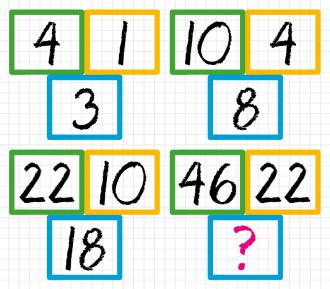MATH PUZZLE: Can you replace...
MATH PUZZLE: Can you replace the question mark with a number?Correct answers: 337
The first user who solved this task is Roxana zavari.
#brainteasers #math #riddles

How About a Drink?
A Jesuit was out for a drive and crashed into another car, only to discover that the other driver was a Franciscan.“It was my fault,” each insisted—as is only right and proper with religious men.Concerned, the Jesuit said, “You look badly shaken up, Father. You could probably use a good stiff drink right now to calm down.”He produced a flask and the Franciscan drank from it and said, “Thank you, Father; I feel much better now. But you’re probably shaken up too. Why don’t you have a drink as well?” “I will,” the Jesuit replied, “but I think I’ll wait until after the police have come.”

